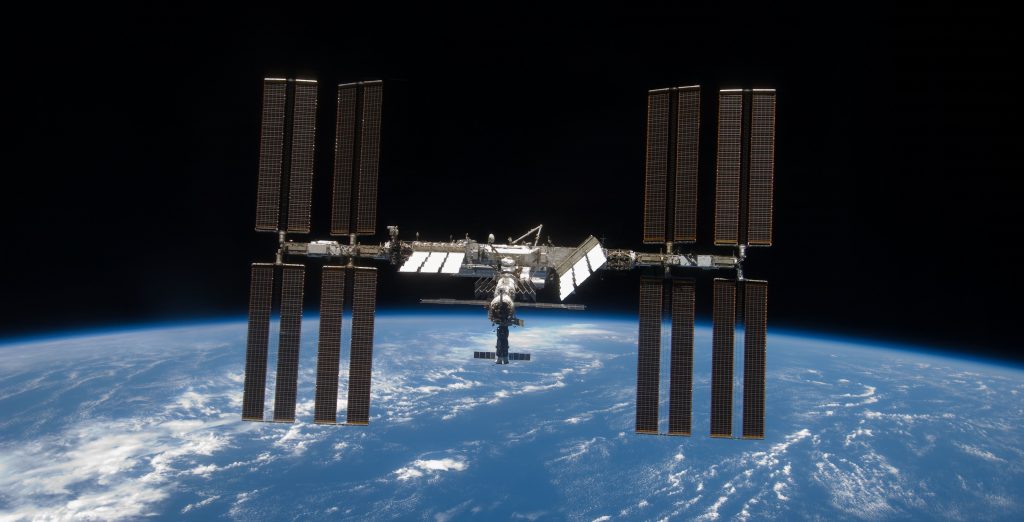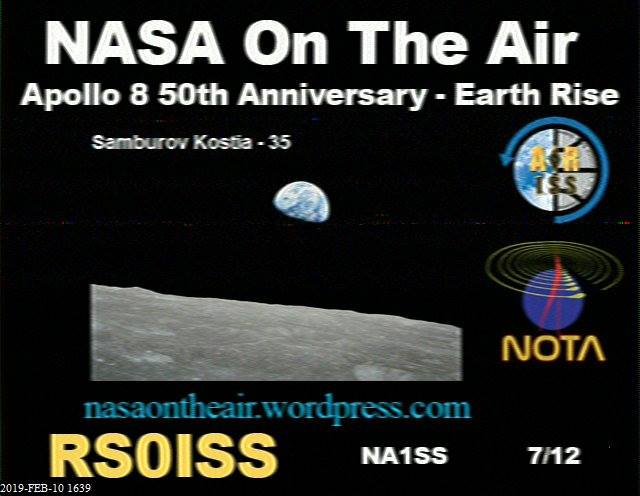(Source: Southgate ARC)
Space Station Slow Scan TV Event Feb 15-17
ARISS is planning another of their popular Slow Scan Television (SSTV) experiment events from the International Space Station on February 15-17
Transmissions on 145.800 MHz FM are scheduled to begin Friday, Feb. 15 at 08:45 UT and run through Sunday, Feb. 17 at 17:25 UT.
SSTV operations is a process by which images are sent from the International Space Station (ISS) via ham radio and received by ham operators, shortwave listeners and other radio enthusiasts on Earth, similar to pictures shared on cell phones using Twitter or Instagram.
When this event becomes active, SSTV images will be transmitted from the ISS at the frequency of 145.800 MHz using the SSTV mode of PD120 and can be received using ham radio equipment as simple as a 2 meter handheld radio or a common shortwave or scanner receiver the covers the 2 meter ham band. After connecting the audio output of the radio receiver to the audio input of a computer running free software such as MMSSTV, the SSTV images can be displayed.
Transmissions will consist of eight NASA On The Air (NOTA) images (see https://nasaontheair.
wordpress.com/). In additional, four ARISS commemorative images will also be included.Once received, Images can be posted and viewed by the public at
http://www.spaceflight
software.com/ARISS_SSTV/index.phpIn addition, you can receive a special SSTV ARISS Award for posting your image. Once the event begins, see details at https://ariss.pzk.org.pl/sstv/
Please note that the event is dependent on other activities, schedules and crew responsibilities on the ISS and are subject to change at any time. Please check for news and the most current information on the ARISS Twitter feed @ARISS_status or the AMSAT Bulletin Board
The SSTV images will be transmitted in PD-120 on 145.800 MHz FM using the Kenwood TM-D710 transceiver located in the Russian ISS Service module.
Note the ISS transmissions use the 5 kHz deviation FM standard rather than the narrow 2.5 kHz used in Europe. If your transceiver has selectable FM filters try using the wider filter. Handheld transceivers generally have a single wide filter fitted as standard and you should get good results outdoors using just a 1/4 wave whip antenna.
ISS SSTV links for tracking and decoding Apps
https://amsat-uk.org/beginners/iss-sstv/You can receive the SSTV transmissions by using an Online Radio (WebSDR) and the MMSSTV software:
• Listen to the ISS when it is in range of London with the SUWS WebSDR http://farnham-sdr.com/
• Listen to the ISS when it is over Russia with the R4UAB WebSDR http://websdr.r4uab.ru/


